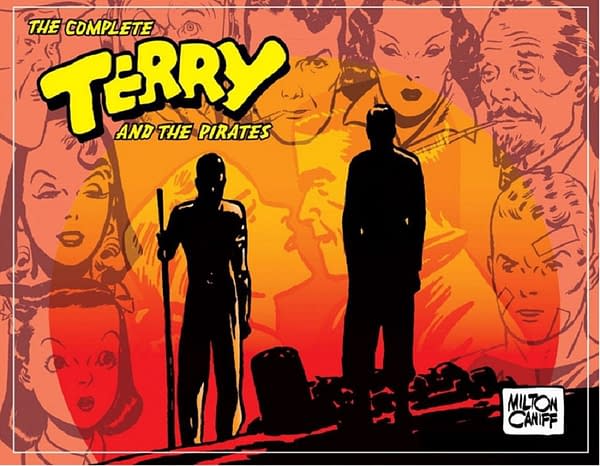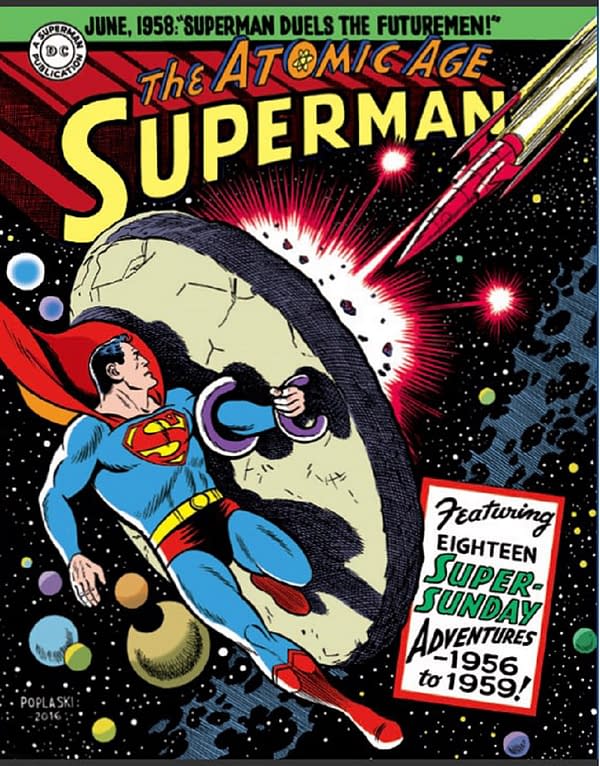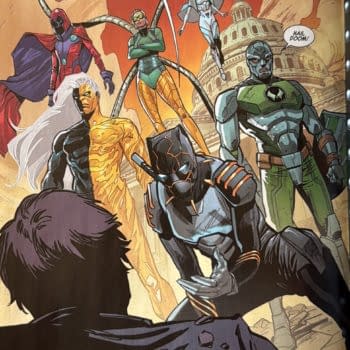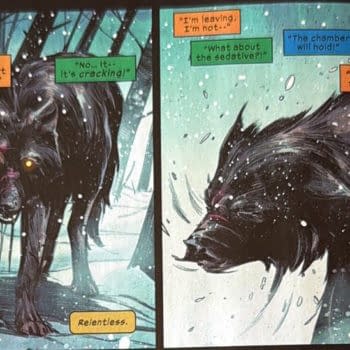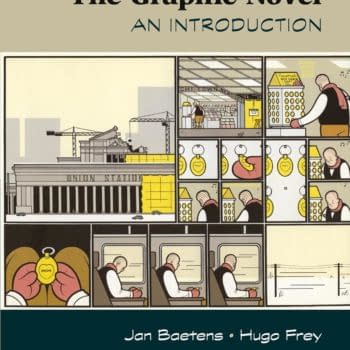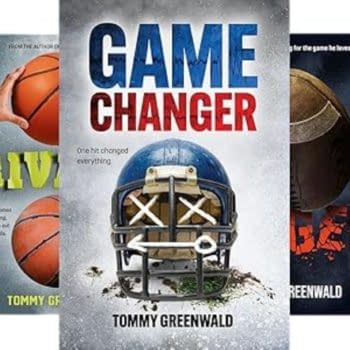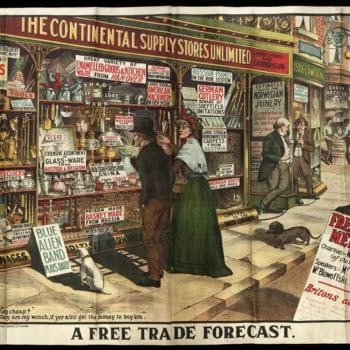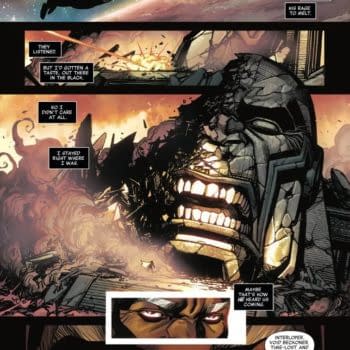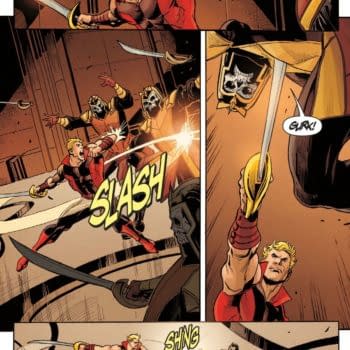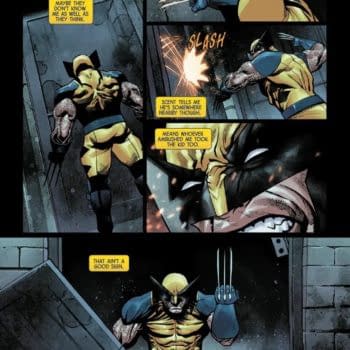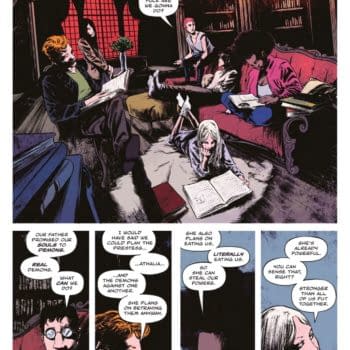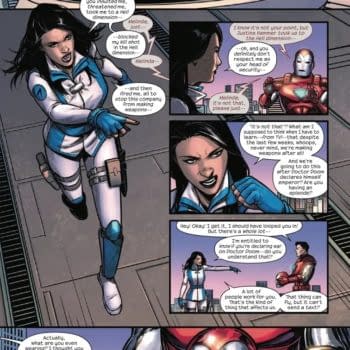Posted in: Comics | Tagged: Bruce Canwell, Comics, HRL
Bruce Canwell on the Library of American Comics
Ian Melton talked to Bruce Canwell for Bleeding Cool.
One of the debates Stan Lee has had with the comic book community and fans over the years is in the use of the term "comic book." He believes the term comic book (with a space) refers to books with comic strips, the kind originally published in newspapers, while "comicbook" (with no space) refers to the mostly monthly books that Marvel, DC, Image, IDW, and other publishers put out. Many fans of super-heroes and other comic book titles tend to think of comic strips starring characters like Garfield, Snoopy, Family Circus, and others.
For many creators of famous super-heroes like Joe Shuster, Jerry Siegel, and Bob Kane, however, getting their characters into "comicbooks" was not the goal — it was to get them into the newspapers they grew up with, getting their adventures published daily in three- or four-panel form. Batman, Superman, Star Trek, Star Wars, and many other "comicbook" staples have had enjoyed the newspaper comics treatment, and for more than a decade the Library of American Comics, in conjunction with IDW, has been collecting the medium's best adventure comic strips.
Bleeding Cool: Thank you for taking the time to talk about the great work you do with the Library of American Comics. Is it just one of the greatest jobs on earth to have?
Bruce Canwell: LOAC started out as a labor of love when we launched in 2007 with the first volume of Milton Caniff's Terry and the Pirates, and it's still a labor of love today. We work hard, but we have a whole lot of fun discovering new information about the strips and their creators. You know, comics are one of only a precious handful of art forms that originated here in America. Whether in "floppy," collected edition, or daily-and-Sunday newspaper strip format, comics have given me a lifetime of reading pleasure, so I get a certain sense of fulfillment from working in this corner of the medium, and it's a real honor to give back to it by helping to preserve so much significant comics work for generations to come.
BC: Can you tell us how you got started as a fan of comic strips as an art form in general?
Bruce Canwell: I'd say I came to comic strips through comic books — sorry, Stan, we have to agree to disagree on the whole "comicbook" thing! I was seven years old in the late 1960s and, after buying the occasional comic book, I decided to dive in and read them on an regular basis. I started out as a "Marvel madman,", which means I was there for the last two-plus years of Jack Kirby on Fantastic Four and Thor, for Neal Adams and Tom Palmer doing the art chores on the original X-Men, for those mind-blowing Steranko Captain America issues, for Roy Thomas's terrific Avengers run with the Buscema brothers and again with Neal, during "The Kree-Skrull War."
By the early 1980s, when the advent of the direct sales market generated an explosion of material, I gobbled up a great deal of it, including the first wave of strip reprints published during that period. NBM's soft covers introduced me to Terry and the Pirates — Kitchen Sink Press let me absorb Steve Canyon, Li'l Abner, Alex Raymond's Flash Gordon, and Eisner's Spirit — as a great fan of the Fleischer Studios Popeye cartoons, Fantagraphics sent me over the moon with their original eleven-volume collection of Segar's Popeye, while their Nemo magazine was like a crash course in the history of newspaper comics. This current generation of comic strip scholars learned what to do and what not to do by studying the work of those who shared their knowledge of the medium throughout the 1980s — Don Phelps, R.C. Harvey, and especially the late Bill Blackbeard. We stand on the shoulders of giants.
BC: And how did you get started with the Library of American Comics?
Bruce Canwell: (Laughs) It all comes back to comic books, I guess, because this answer also has its roots in Marvel Comics, specifically in their letters pages. When I was a teenager in the 1970s I wrote a lot of letters of comment, and most months Marvel would publish at least one of my L.O.C.s in some title or other. Dean Mullaney was also a Marvel "letterhack" — as the breed was known in those days — and in the early '80s, when he launched Eclipse Publishing with Don McGregor and Paul Gulacy's wonderful graphic novel Sabre, I was one of his early customers, but we never directly communicated. At first we saw one another's L.O.C.s but never exchanged a letter between ourselves, and for Sabre it was strictly a business transaction: I sent Dean my money and he sent me a copy of the book (which I still own and occasionally re-read, by the way).
Time passed — and passed. Dean completely left the comics industry for a while. I got to do some work at DC (Batman stories with my old friend, artist Lee Weeks, and with Jim Aparo, a talent I've always held in high regard) as well as at Marvel. Unfortunately, comics hit a lot of tough sledding around 1998 and I lost my toehold in the business (Lee and I are still sorry you never got the chance to see our take on the original Nick Fury — it rocks!).
Skip even further ahead, to 2006. Dean was considering getting back into comics and began by searching the Web for hits on "Eclipse Comics." He found an article I had written for an online publication extolling the considerable virtues of Sabre. He not only liked what I had to say, he went, "Ah-HAH!" — he remembered my name from all those old Marvel Comics letters pages, you see.
My email address was included in the Sabre article, so he dropped me a note, we exchanged quite a few e-mails in a short period of time and realized our tastes and vision were in really, really close alignment. That lead us to talk about doing something together, and the idea of assembling comic strip collections seemed mighty attractive. We both agreed the series we most wanted to see between hard covers was Caniff's Terry and the Pirates — it was and remains one of the great achievements in comics history. Our first Terry volume appeared in the summer of 2007, and about a hundred eighty LOAC books later, here we are. We like to think we have both more years and more books still ahead of us!
BC: Now, is the Library of American Comics a part of IDW, or its own separate entity that publishes its books through IDW?
Bruce Canwell: The answer lies somewhere in between. The Library of American Comics is an imprint within the larger IDW framework. We create our books independently, but enjoy the benefits of printing and distributing using IDW's considerable resources in those areas. Editorially, and in terms of book design and production, LOAC has its own small team, and we're responsible for putting together the output of the line. It's a very collegial relationship between LOAC and IDW, but there's a thin dividing line, too — I write and edit LOAC's Spider-Man books, for instance, but I don't write or edit in IDW's Star Trek or Disney lines of floppies.
BC: What is your current role with the Library of American Comics? What series / books do you currently work on?
Bruce Canwell: I'm Associate Editor of the full LOAC line of books, co-edit our Li'l Abner series with LOAC's creative director, Dean Mullaney, and edit the Spidey comic strip reprints. I'm also one of the line's primary researchers and writers. Along with the hundreds of reprinted strips in each one of our releases, we provide new content in the form of essays and text features that discuss the comic strips and their creators, the effect society had on the work and the effect the work had on society (because believe it or not, many comic strip creators were high-profile stars and household names in the 1910s and on into the 1950s).
Bruce Canwell: I write the features for Abner, Steve Canyon, Red Barry, and Spider-Man, and I've written the features for Terry, Flash Gordon/Jungle Jim, Beyond Mars, King Aroo, and Wonder Woman. I've contributed text to select volumes in several other series, such as Archie.
We've also published comprehensive biographies of artists Noel Sickles (in the process reprinting his compelling 1930s run on the Associated Press aviation strip, Scorchy Smith) and Alex Toth. I wrote the text for both those projects — it took over 80,000 words to tell Toth's story! LOAC also produced the authorized 100th-anniversary retrospective for King Features Syndicate, where I wrote a significant portion of that content and edited my work and the work of other contributors into what has been praised as a cohesive whole. I'm especially proud of that book, King of the Comics, as well as Scorchy and our Alex Toth Genius series.
That's the long-winded answer. The condensed version is: I write text features for several of our books, and edit the text features by other writers for most of the other books in our line.
BC: What does that work look like day to day?
Bruce Canwell: It varies. I could be looking through old newspapers, books, or magazines, trying to find out what Al Capp or Milton Caniff were doing in a given year — as I said, some of these comic strip creators were celebrities who were covered in articles and gossip columns. I could be reading the strips that will make up the next volume in our Spider-Man series or one of our LOAC Essentials one-shots, refreshing myself on the story content for that upcoming book. I might be using the information I've amassed to outline my next text feature, or I could be past the outline stage and doing the actual writing work. Maybe I've received text from one of our other writers for a strip like Star Wars or Dick Tracy and I'll be editing that text — I make suggestions that go back to the writer for consideration.
There are also times I travel to do research, visiting a library where a cartoonist has donated his collected work and papers. The Ohio State University houses an immense collection in its wonderful Billy Ireland Cartoon Library & Museum, and I'm usually there at least once every couple years. I live in the greater Boston area, but I've gone cross-country to UCLA to review their holdings from George McManus, the amazing creator of Bringing Up Father, and I've made the short drive to Boston University and researched Harold Gray at B.U.'s Mugar Library, where I've held the original art for the first week of Little Orphan Annies in my hot little hands. That was an amazing experience, believe me!
I grew up loving writing and loving comics, which means that reading comics, learning more about comics, and writing about comics is a comfortable fit for me.
BC: The collections are pretty incredible and many have a similar feel and look. (For example I have the Amazing Spider-Man The Ultimate Newspaper Collection! Volume 4, Superman: The Silver Age Dailies Volume 1, and Batman: The Silver Age Newspaper Comics Volume 1 next to me…) How was this look established? (Three strips a page, hardcover, trade dress, etc.) Though a few of the series have a different look like the Star Trek books, so it just determined series to series or editor to editor?
Bruce Canwell: Well, LOAC is not Marvel or DC, with a whole floor of an office building filled with editorial staff. Dean edits — I edit — Lorraine Turner is LOAC's art director — and that's our brain trust. Kurtis Findlay is our online communications coordinator. Dean and Loraine live 1500 miles away from me, and Kurtis is on the West Coast while we're on the East Coast — the Web makes it easy for us to work as a "virtual office."
What affects the format of our books is as much the format in which the strips were originally published in newspapers as it is editorial vision. During the heyday of newspaper strips Sunday pages were typically published as "halves" (in a landscape orientation, two to a page) or "tabs" (in a portrait orientation, one to a page — they ran in tabloid papers like the New York Daily News, hence the name "tabs"). Li'l Abner ran most often as a "tabbed" Sunday, so we formatted our dailies accordingly and publish Abner in a large-sized, portrait-oriented format. Spider-Man's Sundays started out as halves (and, as the size of comics shrunk, were eventually reduced to a new format called "thirds"), so Spidey works best in the oblong orientation you mentioned. Our Superman strip reprints live in both those worlds — the Supes Sundays tell stories that are separate from the dailies, so we printed the dailies in oblong books and the "tab" Sundays in large, Abner-sized volumes.


